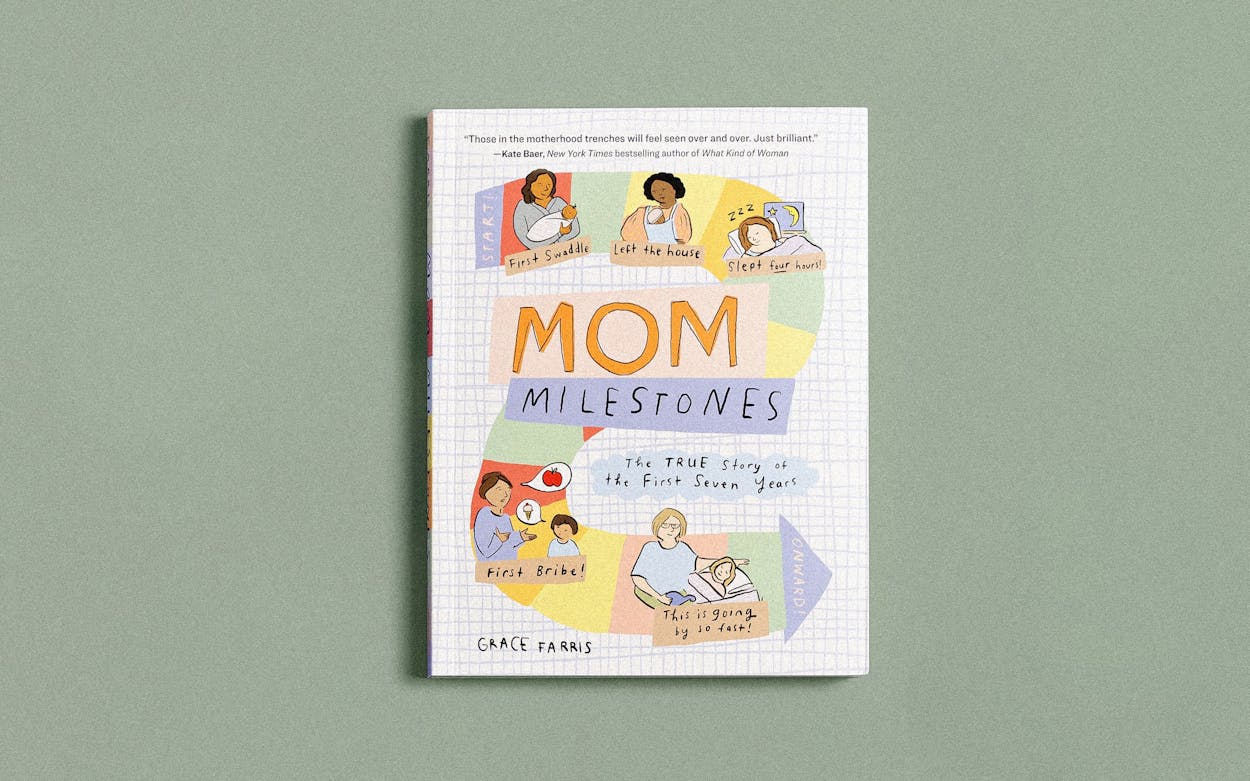The other day, I almost threw a copy of What to Expect the First Year across the room. As a parent to be, it’s impossible to avoid the What to Expect series, whose seven pastel-hued titles have sold more than 42 million copies nationwide. First published in 1984, What to Expect When You’re Expecting is such an enduring American institution that it even became a rom-com starring Cameron Diaz and Jennifer Lopez. Maybe some of the appeal is simply in the title. When you’re a clueless first-time parent, overwhelmed by the daunting idea of being responsible for another human life, you’d like nothing more than to know what to expect. So, after a friend lent me her dog-eared copy, I jumped right in—and found it nearly unreadable. Sure, author Heidi Murkoff (who, notably, has no medical training) presents a thorough overview of all the basics of pregnancy, birth, and baby care. But she does it in such a cloying, condescending tone that, as I read, I felt a bit queasy, though my first-trimester nausea had long since abated.
For example, here’s the What to Expect series on trying to conceive: “Ready to board that cute little passenger on the mother ship?”
On choosing a name: “Maybe you’ve been settled on your munchkin’s moniker since you were a munchkin yourself. . . . Or maybe, if you’re like a lot of other parents approaching delivery day, you’re still playing the name game . . . late in the game.”
On caring for a sick child: “There’s nothing quite the same as having your mommy or daddy around to hold your hot little hand.” (Did a baby write this?)
This cutesy language was bad enough, suggesting that, although the baby isn’t even here yet, I’ve already begun to be subsumed by the pink, patronizing, all-encompassing identity of Mommy. But the chapter that really lost me was the one on breastfeeding, which insisted that “breast is best by far,” and guilt-tripped anyone struggling with the process by urging them to just keep trying, because it’s crucial to your child’s health. In fact, research suggests that the health benefits of breastfeeding are mild. Nor does the book acknowledge the many situations in which nursing might be impossible, such as if your household has two dads, if you become a parent through adoption or surrogacy, or if you have to return to work quickly and can’t pump on the job. On the latter subject, Murkoff writes, “You may find that mixing business with breastfeeding is easier than you thought.” When I texted this line to a working-mom friend, she replied with a skull emoji.
Overall, the book left me more stressed than before—and it appears I’m not alone. A 2017 Welsh study of 354 moms found that the more parenting books they’d read, the more likely they were to be depressed. It’s not hard to see why. Many of these books, which have such tantalizing titles as Twelve Hours’ Sleep by Twelve Weeks Old and The Happiest Baby on the Block, prey on new parents’ insecurities. They leave you feeling that there is only one right way to do things, and if that system doesn’t work for you and your kid, you’ve probably already scarred them for life.
Clearly, this is madness. Grace Farris agrees, which is why the Austin cartoonist, associate professor at Dell Medical School, and mother of two has written and illustrated a new kind of parenting book. Mom Milestones: The TRUE Story of the First Seven Years (March 29, Workman Publishing) gently parodies the standard baby-book format by tracking the emotional growth of a new mom, rather than the physical development of her child.


“When I was pregnant with my first son, there were tons of books about what was happening to my body and how I might feel,” she says. After her son arrived, she noticed that parenting books barely mentioned her experience, instead focusing heavily on the baby’s milestones. “I mean, of course they do,” she laughs. “But at the same time, a new mom is growing and changing too, right? So I wondered: if there were a milestone book about motherhood, what would that look like?”
Using the same approachable, lighthearted, and realistic-but-reassuring style that has made Farris’s cartoons a hit on Instagram, Mom Milestones follows this concept from the bleary postpartum days (“Newborn mom may be able to gaze at the baby, possibly with a confused or bewildered look”) to elementary school (“During marginally successful sit-down meals, mom now tries to extract details about what happened at school”). Farris celebrates small victories: the first time you leave the house with the baby, the first time you get more than five hours of sleep in a row. She lists coping strategies, with a comic titled “Mom’s Hideout Spots” depicting beleaguered women taking respite in the car, the garden, and (such luxury!) a walk to the mailbox. And she does all this with a satisfying specificity: a comic titled “Things a Partner Can Do” includes a suggestion to “slice an apple very thinly and present on a nice plate.”
Though the book has more of a documentary style than an instructional one, I still found myself writing down some of her best tips: stockpile easy-to-read books for all the late-night wake ups. Splurge on nice pajamas for yourself (not for the baby, who will outgrow her clothes almost instantly). And bring headphones when you stay in a hotel with your infant, so you can watch a movie after he goes to sleep. This is the kind of lived, personal advice you will not get from What to Expect.
The book also includes mock medical diagrams, inspired by Farris’s training as a doctor of internal medicine. A sketch of a preschool mom’s hand muscles, for example, includes the flexor digitorum profundus, which “helps slice grapes.” For Farris, who published her first comics in the student newspaper at Brown and picked up the practice again as a medical resident, art and medicine have always gone hand in hand. In spring 2020, as the first wave of the COVID-19 pandemic overwhelmed the New York City hospital where she was working, documenting her experience helped her stay sane. To protect their two sons from the virus, she and her attorney husband sent the boys to live with their grandmother in Connecticut. At work, she sometimes felt helpless to keep up with the constant influx of COVID patients. “That was such an intense time that I didn’t think much about how I was coping until later on,” she says. “But the outlet of comics and having a virtual community was really helpful. People talk about making meaning from these experiences—I guess I’d always done that with comics about motherhood, and then with the pandemic too.” In one comic, she listed the songs that hospitals played when COVID patients were released: “Here Comes the Sun,” “Don’t Stop Believing.” In another strip, for NPR, she explored how health-care workers were finding solace in their creative hobbies. Eventually, Farris hopes to write a graphic memoir about her pandemic experience.
For now, the Austin native is enjoying being back in her hometown—she moved from New York to Texas in summer 2020, to be closer to family, and now works in the same hospital where she was born. “There’s a lot of nostalgia in sharing little things from my childhood with my kids,” she says. “This week, I pointed out some red buds that were coming out on the trees to my older son.”
She hopes that her book will help moms feel less isolated. “There’s a lot of stuff with motherhood that feels shameful, or as if you’re doing it wrong,” she says. Visually, Farris explores shame and anger through her Momsters, a recurring comic in which she depicts moms as googly-eyed, Seussian characters that utter such lines as “If one more person says, ‘Just wear the baby,’ I’ll explode” or “We are done with screens for the day.” She says the Momster trope has become a way to talk about difficult feelings. “Sometimes I’d say pretty innocent things, and my kids would look at me like I was a monster,” she recalls. “And then I expanded it to situations where you feel like you’ve become a monster, or that your emotions are getting off the rails.” A typical Instagram comment on a Momster comic reads, “How do I simultaneously feel so seen and so attacked by your art??”
The hardest moments as a parent, Farris says, often feel as if they are happening only to you. “But I now know, from sharing the comics and interacting with people from all over the world, that no matter how unique it feels, parents everywhere are experiencing it too. There are going to be lots of times when you feel like you’re failing, and there is no one bull’s-eye way to do parenting.” That last sentence might not be pithy enough to fit in the title of a parenting book, but it does ring true.








